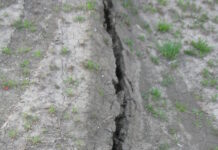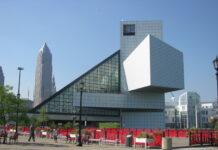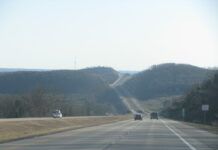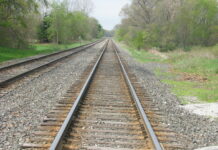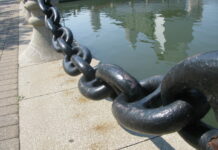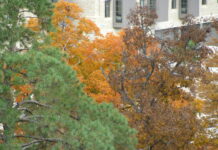Photo credit: DiasporaEngager (www.DiasporaEngager.com).
The Jewish community of Vienna has a fascinating but tragic history. It’s a city where Jews were powerful financiers, advisors, Nobel prize winners, and world-renowned psychologists. Yet, in this same city, the Jews were expelled three times, their homes and synagogues destroyed, and even in the best of times, they lived in an environment of open antisemitism. It is no coincidence that Hitler was an Austrian who lived in Vienna for years, and that many of his ideas came from that period.
Although a Jewish presence existed in Vienna as early as the 10th century, the first recorded Jews arrived in Vienna in the late 12th century. The first Jew, known as Shlom (Solomon), was a mint master and financial adviser to Duke Leopold V and his presence was documented by 1194. In a cruel pattern that would repeat itself in Vienna’s history, in 1196, Shlom and 15 other Jews were murdered by Christians from the Third Crusade.
In 1238, Emperor Frederick II granted Vienna’s Jews a Charter of Privileges, identifying Jews as “chamber serfs” — meaning that the legal status of Jews was that they “belonged” to the Roman-German emperor. Six years later, Duke Frederick II issued the “Charter of the Jews,” spelled out terms for their protection and money-lending guidelines.
During the Black Death epidemic in 1348-9, Vienna was one of the few cities that did not blame the Jews for causing the plague. Consequently, it became a haven for Jewish refugees, which will be seen again in Vienna’s history. During the 14th century, Jews comprised about five percent of the city’s population.
During this period, Vienna’s community was led by world-famous rabbinical leaders. Rabbi Yitzchak of Vienna (circa 1200-1270) was a student of the Tosafists of France and Germany. He brought a high-level Talmud study to Vienna, the standard hallmark of a learned Jewish community. He is renowned for his tome, Ohr Zarua, a work of Halacha (Jewish law) quoted by scholars since he published it.
His son, Rabbi Chaim Ohr Zarua, also served as a rabbi in Vienna. He adapted his father’s classic Ohr Zarua to make it more accessible, including only the decisions without the complete justification.
Rabbi Meir ben Baruch Halevi (1320-1390) served as the Rabbi of Vienna for the last 30 years of his life, and instituted a requirement that a Talmudic student could not officiate as a rabbi unless he had ordination from a properly ordained rabbi. This practice requiring rabbis to have ordination was accepted by Ashkenazi communities in the succeeding generations, and it continues to this day.
Rabbi Yisrael Isserlin (1370 to l440) is considered the last great rabbi of medieval Austria. He authored the classic work Terumas ha-Deshen and a super-commentary on Rashi’s Torah commentary.
Toward the end of the 14th century, antisemitism began to rise among the burghers, likely due to jealousy of their Jewish neighbors. In 1406, during a large fire that destroyed the synagogue, the burghers used the opportunity to attack Jewish homes.
The persecution soon became far worse. On May 23, 1420, Duke Albert V issued the Vienna Decree, ordering all Jews of means imprisoned and their possessions confiscated. Jews who were impoverished before the Vienna Decree were forcibly expelled to Hungary. The imprisoned Jews were tortured, and attempts were made to forcibly convert them to Christianity. Children were separated from their parents and given to monasteries for conversion. After the Pope spoke out against the forced baptisms, the duke responded by having the remaining Jews — 210 men and women — burned at the stake on March 12, 1421. Even the synagogue was not spared; its stones were used to build a new faculty building for the University of Vienna.
The Jewish community of Vienna was utterly destroyed, and Jews were forbidden to live in Vienna.
The leading Ashkenazi sage, Rabbi Yaakov Moelin (1365-1427), known as the Maharil, who lived in Mainz, Germany, at the time, recorded the horrific events and sharply referred to Austria as “the land of blood.”
In 1451, a few Jews were permitted to return to Vienna and were given special protection from the Hapsburg Emperors. By 1512, there were 12 Jewish families in Vienna. A small number of Jews continued to live in Vienna during the 16th century, although they lived with the constant threat of expulsion hanging over them.
In 1624, Emperor Ferdinand II limited the Jews of Vienna to a ghetto on the present-day Leopoldstadt quarter site, consisting of 15 dwelling houses. Their numbers steadily increased; by 1670, 136 dwellings housed 500 families. When Jews of Ukraine faced the infamous Chmielnicki Massacres in 1648-49 known as Tach v’Tat, some chose to escape to the safety of Vienna.
For a time, the community of Vienna resumed its respected position in the Jewish world and the rabbis of the renewed community were once again world-famous leaders. Among them were Rabbi Yom Tov Lipman Heller, known as the Tosfos Yom Tov (1579-1654), and Rabbi Shabsai Sheftel Horowitz (1590-1660), the author of Vavei Amudim, who was renowned for his expertise in both Halacha and Kabbalah.
Renewed Hatred
The second expulsion of Jews from Vienna took place in the middle of the 17th century.
Bishop Kollonitsch, a conniving and influential antisemite, served as the Lord Chamberlain to Emperor Leopold I (1658-1705). At his urging, Emperor Leopold decreed to expel the Jews of Vienna, despite the tremendously negative financial impact this would have on his kingdom, because the Jews were his financiers and advisors.
The influential Jews of the community did their utmost to stop or limit the expulsion. They tried giving the emperor the enormous sum of 100,000 florins but were refused. They asked Queen Christina of Sweden to intervene, but although she did, her words were ignored. On March 1, 1670, Emperor Leopold ordered all the Jews to leave Vienna and all of Austria. The deadline was August 1, and the last Jews of Vienna were exiled in the month of Av. The Great Synagogue was converted into a Catholic church, and the Jewish area was renamed Leopoldstadt in honor of Emperor Leopold I’s success in removing the Jews from Vienna. (And that name remains to this day.) As an aside, Bishop Kollonitsch continues to be revered by Viennese citizens, and a giant statue of him stands in front of the town hall in Vienna.
The Court Jews of Vienna
Within a short time, the expulsion began to negatively impact Vienna’s economy.
The first Jew allowed back into Vienna to reside was Samuel Oppenheimer, who was officially permitted to reside in the city in 1676. Those accompanying him became the nucleus of the very small, not-legally recognized community. They were not permitted to have a synagogue, and all services had to be held in private homes.
Oppenheimer provided needed supplies for the Austrian army, including uniforms, food, horses for the cavalry, and even supplies for the hospital. Yet, despite all he accomplished on behalf of Austria, he still suffered from antisemitism. Bishop Kollonitsch accused Oppenheimer of trying to murder Rabbi Samson Wertheimer (Oppenheimer’s protege who was a great Torah scholar and the future leader of Austrian Jewry), and Oppenheimer was jailed. Only after paying an enormous sum was he released, and his claim of innocence was accepted. Oppenheimer supported many Jewish scholars and built synagogues and yeshivas in various communities. He also redeemed Jews taken captive in Turkish wars. After he died in 1703, his son Emmanuel appealed to have the debts owed to his father repaid by Austria. In response, rather than pay Emmanuel the six million florins they owed, the state claimed that Emmanuel needed to pay them four million florins. This wealthy family was left penniless.
Along with Oppenheimer, a very limited number of Jews were permitted to return to Vienna. In all, 10 wealthy families — mostly known as Court Jews — resided in Vienna. They initially paid 300,000 florins for this privilege, and an additional tax of 10,000 florins each year.
Despite the antisemitism and lack of civil rights, the Viennese Court Jews’ influence increased. As a result, Vienna became a center for Jewish diplomacy and philanthropy for Jews throughout the empire.
Sephardic Jews and Diego D’Aguilar
In 1718, due to peace treaties with the Ottoman Empire, Turkish citizens were granted permission to travel to and temporarily reside in Austria. Ironically, although Austrian Jews could not reside live in Austria, Turkish Jews could. The Sephardic Jews from Turkey formed a legally recognized community in Vienna. (With typical Jewish ingenuity, there were Austrian Jews who traveled to Turkey, obtained Turkish citizenship and passports, and returned to reside legally in Austria.)
During the reign of Maria Theresa, a Jew from Lisbon retained a particularly powerful position in the Empire. Diego D’Aguilar was born to a Converso family in Spain and was forcibly taken from his parents as a child and raised to become a Catholic Priest. After he was ordained, his mother managed to obtain an audience with him and emotionally reminded him of his Jewish roots. His sister had been caught practicing Judaism, and his mother hoped he might be able to stop her being burnt at the stake.
Although he was unable to save his sister, this meeting reawakened in him a desire to return to the Judaism he barely knew, and he and his mother escaped to Vienna. In Vienna, D’Aguliar became a full-fledged observant Jew and was financially successful due to his reorganization of the tobacco industry. Ironically, he became a favorite of the antisemitic Empress Maria Theresa. He raised tremendous amounts of money for government loans and rebuilt the Schoenbrunn Palace in Vienna. He remained loyal to the Jewish community and was able to prevent the expulsion of Jews from Moravia and Prague in 1744.
Empress Maria Theresa made D’Aguilar’s a baron in recognition of his services to Austria. Due to his influence, she also abandoned her plans to expel Jews from the Empire in 1748.
D’Aguilar left Vienna suddenly in 1749 when the Spanish government demanded his extradition. He moved to London with his wife and a large family of 14 children. Before leaving Vienna, he presented the community with beautiful silver crowns for the Torah scrolls, upon which his name was inscribed.
Despite her positive feelings towards D’Aguilar, Empress Maria Teresa remained an ardent antisemite. Aside from the 12 prominent families, no Austrian Jews were permitted to live in Vienna, and all antisemitic decrees remained in place.
Emperor Joseph II: Increased Tolerance of Jews
The slow process of removing restrictions on the Jewish community began in November 1780, when Joseph II, Maria Teresa’s successor, became Emperor and ruled the Hapsburg Lands from 1780-1790. In 1781, he discontinued the Leibmaut poll tax, which had been paid by Jews to enter certain cities since the Middle Ages. (This was a particularly degrading tax, as it was a property tax and made the statement that Jews were property and not people.)
In 1782, Emperor Joseph II proclaimed an Edict of Tolerance to make the Jews “of better use to the state,” as was stated in the prologue to the resolution. Jews no longer had to wear a yellow band, they could attend schools and universities (although they were still limited in their choice of professions), and they could live anywhere in Vienna (although they could not own property). He took steps to assimilate the Jews into society, requiring that Hebrew and Yiddish be replaced by the country’s national language in public discourse and forbade documents and textbooks to be printed in Hebrew. He also required Jews to take on last names approved by the Austrian officials.
Many Jews took advantage of the new opportunities granted them, but in the process, many also lost their Judaism. At the Congress of Vienna in 1815, salons of assimilated Jewish hostesses served as meeting places for the rulers of Europe. One of the most famous hostesses was Fanny Arstein, who had a salon attended by the prominent personalities of the time, including the emperor and Mozart. In 1821, nine Jews of Vienna were knighted and raised to the nobility.
With newly acquired rights, the Jewish community hired renowned architect Josef Kornhäusel to construct the Stadttempel, the central synagogue of Vienna, which was the first legal synagogue to be opened since 1671. The magnificent synagogue was inaugurated in 1826, but in deference to the law, it was built hidden from the street view.
Despite all the “tolerance,” the Jews continued to exist as a non-community, as they were forbidden by law to establish themselves as a community, until 1867, when Jews were recognized as equal citizens.
Rabbi Menachem Levine is the CEO of JDBY-YTT, the largest Jewish school in the Midwest. He served as Rabbi of Congregation Am Echad in San Jose, CA from 2007 – 2020. He is a popular speaker and has written for numerous publications. Rabbi Levine’s personal website is https://thinktorah.org. A version of this article was originally published by Aish.
Source of original article: Menachem Levine / Opinion – Algemeiner.com (www.algemeiner.com).
The content of this article does not necessarily reflect the views or opinion of Global Diaspora News (www.GlobalDiasporaNews.com).
To submit your press release: (https://www.GlobalDiasporaNews.com/pr).
To advertise on Global Diaspora News: (www.GlobalDiasporaNews.com/ads).
Sign up to Global Diaspora News newsletter (https://www.GlobalDiasporaNews.com/newsletter/) to start receiving updates and opportunities directly in your email inbox for free.




